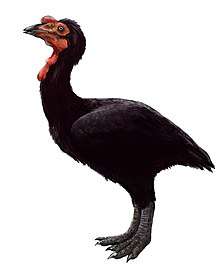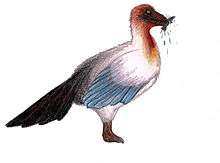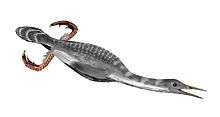Saurornitholestinae
Saurornitholestinae is a subfamily of the theropod group Dromaeosauridae. The saurornitholestines currently include three monotypic genera: Atrociraptor marshalli, Bambiraptor feinbergorum, and Saurornitholestes langstoni. All are medium-sized dromaeosaurs from the Late Cretaceous of western North America. The group was originally recognized by Longrich and Currie as the sister taxon to a clade formed by the Dromaeosaurinae and Velociraptorinae.[1] However, not all phylogenetic analyses recover this group and/or with the same proposed genera.[2][3][4]
| Saurornitholestines | |
|---|---|
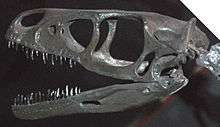 | |
| Reconstructed skull of Saurornitholestes | |
| Scientific classification | |
| Kingdom: | Animalia |
| Phylum: | Chordata |
| Clade: | Dinosauria |
| Clade: | Saurischia |
| Clade: | Theropoda |
| Family: | †Dromaeosauridae |
| Clade: | †Eudromaeosauria |
| Subfamily: | †Saurornitholestinae Longrich & Currie, 2009 |
| Type species | |
| †Saurornitholestes langstoni Sues, 1978 | |
| Genera | |
Classification
Below are the results for the Eudromaeosauria phylogeny based on the phylogenetic analysis conducted by Jasinski and colleagues in 2020 during the description of Dineobellator. The group was recovered, but this time with the exclusion of Bambiraptor:[5]
| Eudromaeosauria |
| |||||||||||||||||||||||||||||||||||||||||||||||||||||||||||||||||||||||||||||||||||||||
See also
References
- Longrich, N.R.; Currie, P.J. (2009). "A microraptorine (Dinosauria–Dromaeosauridae) from the Late Cretaceous of North America". Proceedings of the National Academy of Sciences. 106 (13): 5002–5007. doi:10.1073/pnas.0811664106. PMC 2664043. PMID 19289829.
- Turner, A.H.; Makovicky, P.J.; Norell, M.A. (2012). "A Review of Dromaeosaurid Systematics and Paravian Phylogeny". Bulletin of the American Museum of Natural History. 2012 (371): 1–206. doi:10.1206/748.1. hdl:2246/6352.
- Senter, P.; Kirkland, J. I.; Deblieux, D. D.; Madsen, S.; Toth, N. (2012). "New Dromaeosaurids (Dinosauria: Theropoda) from the Lower Cretaceous of Utah, and the Evolution of the Dromaeosaurid Tail". PLoS ONE. 7 (5): e36790. doi:10.1371/journal.pone.0036790. PMC 3352940. PMID 22615813.
- Hartman, S.; Mortimer, M.; Wahl, W.R.; Lomax, D.R.; Lippincott, J.; Lovelace, D.M. (2019). "A new paravian dinosaur from the Late Jurassic of North America supports a late acquisition of avian flight". PeerJ. 7: e7247. doi:10.7717/peerj.7247. PMC 6626525. PMID 31333906.
- Jasinski, S. E.; Sullivan, R. M.; Dodson, P. (2020). "New Dromaeosaurid Dinosaur (Theropoda, Dromaeosauridae) from New Mexico and Biodiversity of Dromaeosaurids at the end of the Cretaceous". Scientific Reports. 10 (1). doi:10.1038/s41598-020-61480-7. ISSN 2045-2322. PMC 7099077. PMID 32218481.
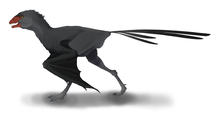
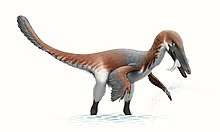
.png)
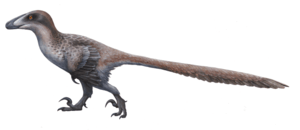

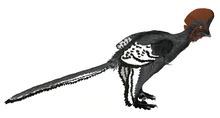
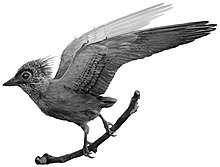

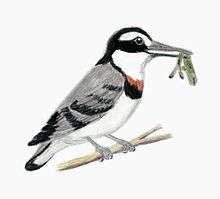
.png)
